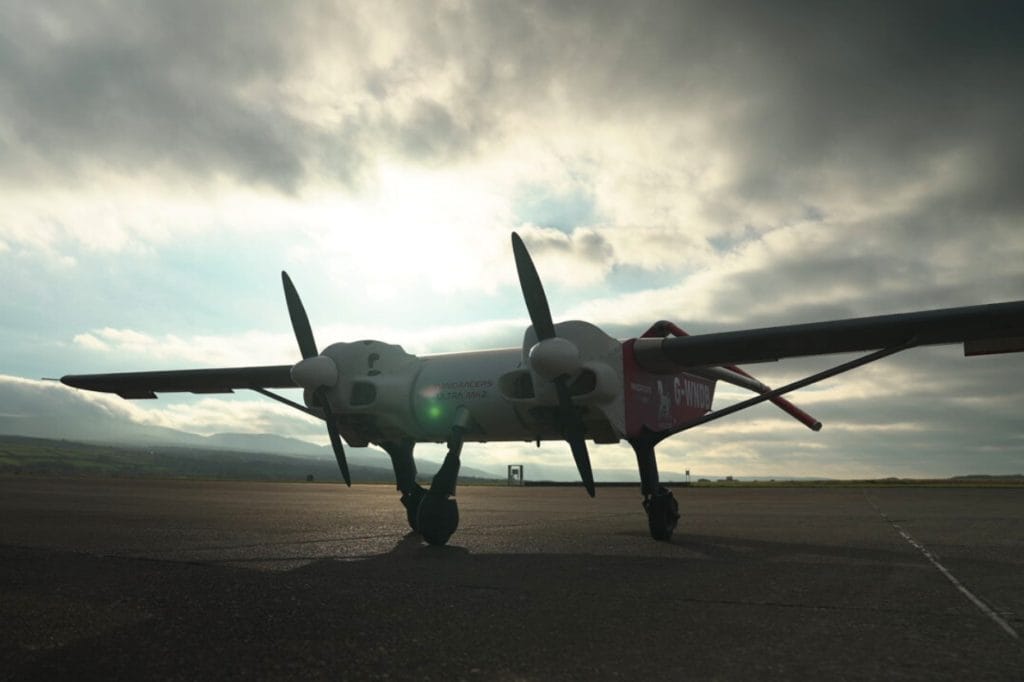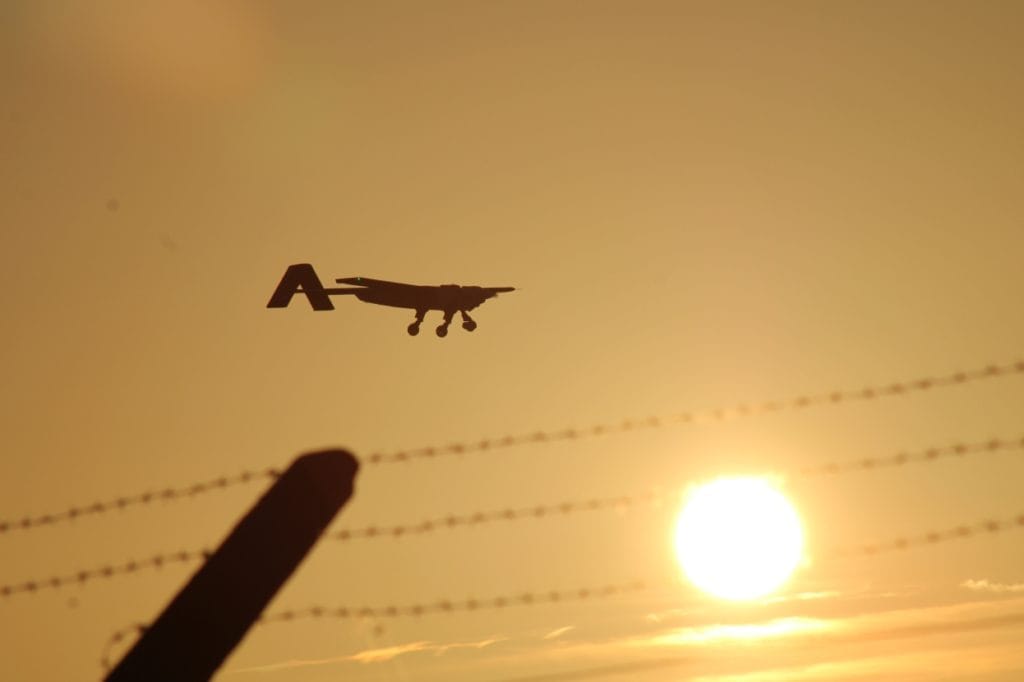Autonomous Air Cargo: The Next Frontier for Global Logistics?

Global cargo transport is entering a defining period, as across air, land and sea, logistics networks are being hit by shifting trade flows and new environmental rules. These factors have made the need for resilient supply chains even more urgent.
The pressures facing the sector range from driver shortages on the road to canal disruptions at sea. At the same time, innovations like heavy-lift cargo drones that operate autonomously are opening new pathways in aviation and creating practical options for drone delivery logistics in both commercial and humanitarian settings.

Adjusting to Volatile Sea Freight
Container shipping has stabilised when compared with the turbulence we saw during the pandemic, but volatility has not fully disappeared. Industry outlooks note softer freight rates combined with rising debt levels and demand swings. Spot rates that recently spiked due to Red Sea diversions have since fallen back, too.
Schedule reliability has improved steadily over the last 12 months.
Data shows global on-time performance reached almost 67% by June this year. That’s the best level since 2023, but still comfortably below the reliability shippers depended on before Covid19. So, it is progress if not full predictability.
Maritime chokepoints continue to define capacity.
In the Red Sea, traffic has risen to around 36 to 37 ships a day, up from the lows of 2024 but still far below the 72 to 75 ships seen before the crisis. The Panama Canal is also operating below historic averages, handling just under 34 transits a day in March 2025. Conditions have eased, but again, recovery is far from complete.
Environmental rules are now embedded in shipping contracts, too. FuelEU Maritime, which has been in full force since January 2025, means that shipping companies have to cut the greenhouse gas intensity associated with energy used on EU-linked voyages.
Demand Swings and New Obligations in Air Freight
Much like sea freight, air cargo demand has been uneven. IATA reported a 2.2% year-on-year rise in cargo tonne kilometres in May, followed by a 5.5% increase in July, with June showing a slight slump in between. According to IATA, tariff changes and the removal of the U.S. de minimis threshold for small parcels are having a heavy impact on e-commerce supply chains; as a result, air cargo growth is expected to slow to around 0.7% by the end of the year.
Compliance costs are another similarity with sea freight
ReFuelEU extends to aviation and obliges carriers to blend at least 2% sustainable aviation fuel at EU airports. There has been some support with the cost gap; the EU has offered a level of subsidy to help manage costs. That said, shippers are already experiencing higher surcharges on European routes.
Capacity is another pressure point.
Aircraft deliveries this year have been at their highest since 2018, but production remains constrained. That keeps belly capacity tight, especially on long-haul passenger routes, and limits options for moving high-value or urgent goods.
This is a landscape where innovations like UAV cargo transport are beginning to supplement conventional aircraft. Middle-mile air freight drones offer the potential to move loads between regional airports, easing bottlenecks and creating alternative lift for time-sensitive cargo.
Overland Freight
Road cargo is facing structural challenges and shifting investment priorities. On the roads, freight continues to struggle with a severe driver shortage. The International Road Transport Union has reported more than 3.6 million unfilled roles over the last year. Broadly, this is caused by the workforce ageing, as well as women accounting for less than seven per cent of drivers worldwide. Retirements are expected to widen the gap further over the next five years.
Electrification and automation are providing some relief, but is it enough?
In the U.S., we recently saw the launch of commercial driverless trucking services between Dallas and Houston, focused on hub-to-hub routes. The aim here is to ease pressure on long-haul capacity strains, so that drivers can be redeployed.
Sales of electric trucks are also accelerating, with more than 90,000 medium and heavy-duty units sold globally in 2024, up nearly 80% on the previous year. China dominates uptake, but growth in Europe and North America is being pushed on by subsidies and low-emission zone rules, offering shippers opportunities to decarbonise regional distribution despite challenges with depot charging.
This is more crucial than ever as organisations across sectors face tightening legislation on carbon emissions and sustainability. Potentially, a shift towards electrification could be one of the key ways for road freight to remain competitive.
Autonomous Air Cargo in the Wider Transport Context
Across sea, road and rail, the trend is clear: cost volatility, labour gaps, and environmental rules are impacting freight decisions. It is in this context that drones that create an autonomous air cargo service are moving from concept design to practical deployment.
These systems provide a middle ground between traditional air freight and last-mile couriers. Drone delivery logistics can operate on regional routes, bypassing congested roads and avoiding the high fuel surcharges of long-haul aircraft. The humanitarian applications are equally significant, with UAV cargo transport able to deliver its payload rapidly to hard-to-reach areas or conflict zones.
The economics are becoming more compelling.
Unlike crewed aircraft, middle-mile air freight drones do not face crew cost escalation. They can operate from short runways and smaller airfields, creating new nodes in supply chains without the need for major infrastructure investment.
Think Autonomous Air Cargo Could Support Your Logistics Strategy?
At Windracers, we specialise in scalable UAV cargo transport designed to meet real-world logistics challenges. Our Windracers ULTRA platform is a twin-engine, fixed-wing drone built for resilience, capable of carrying payloads of up to 150 kilograms over distances of 1,000 kilometres. It has been tested extensively in both commercial and humanitarian settings, proving reliable in environments where conventional logistics face barriers.
As has been trialled in the Scottish Highlands, Windracers ULTRA bridges the gap between regional airports and distribution centres and enables middle-mile air freight drones to take on roles that traditional aircraft and road haulage cannot always serve efficiently. For organisations seeking to strengthen supply chain resilience, improve reach, and cut operational risks, the technology is ready to deploy.
To learn more about how Windracers can integrate drone delivery logistics into your operations, get in touch with our team today.
FAQ
What industries are adopting autonomous cargo drones first?
Initial uptake is strongest in defence, humanitarian relief, and global postal services.
Are there weight restrictions for UAV cargo transport?
Payload limits vary by design. Windracers ULTRA can carry up to 150kg
How reliable are middle-mile air freight drones in poor weather?
Modern drones are tested in diverse climates with automated systems to ensure safe routing.
What role does drone delivery logistics play in sustainability goals?
By reducing reliance on road or long-haul aircraft, drones cut emissions for regional transport.
